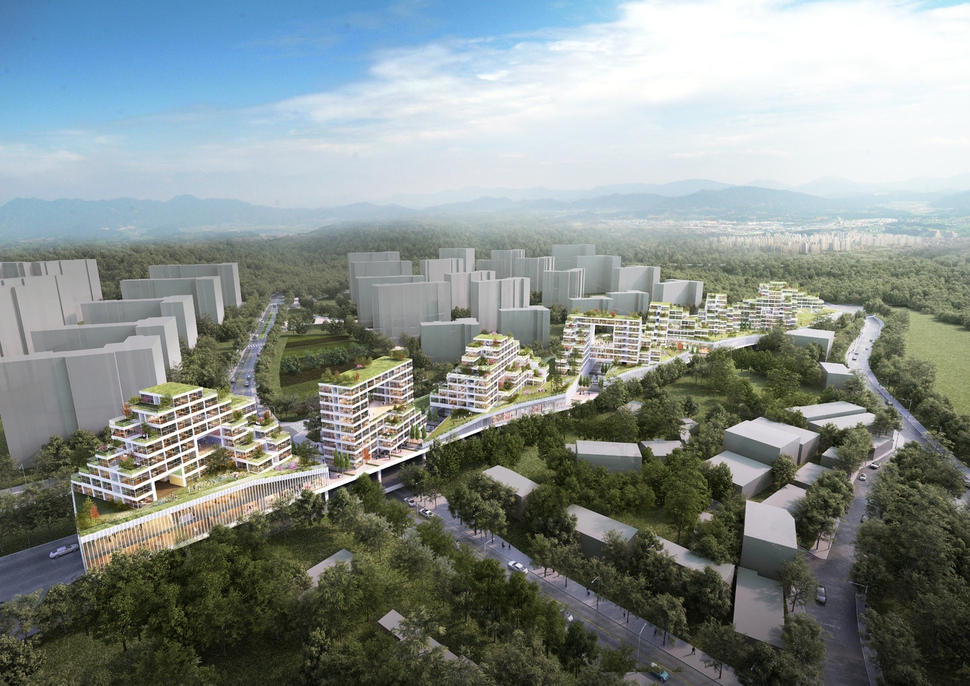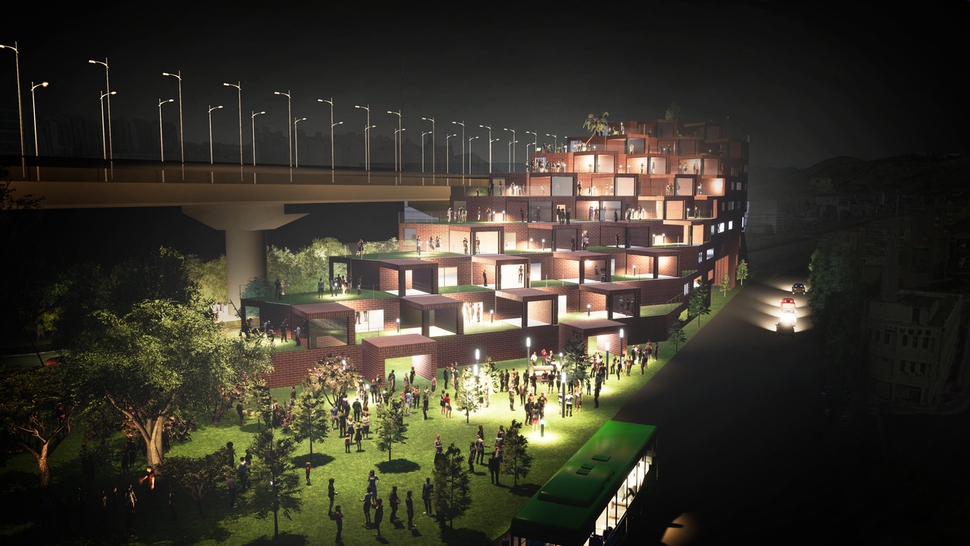 |
|
An architectural image of the public housing project that Seoul plans on building atop the Northern Trunk Road. (provided by the Seoul Metropolitan Government)
|
Critics observe poor living environment of designated spaces
On Dec. 26, the city of Seoul announced a plan to provide 80,000 units of public housing in underutilized spaces throughout the city, including above the roads, on traffic islands and in rainwater pumping stations. While this plan is being praised for aiming to provide public housing downtown without damaging the city’s greenbelt, some are concerned that noise pollution and dust would create a poor housing environment for houses built above the roads. On Wednesday, Seoul released the details of a plan to add 80,000 units of public housing and unveiled five innovative approaches to providing housing. This implies that the city plans to create 50,000 units on its own in addition to the approximately 30,000 units of downtown public housing that the government promised in the first and seconds rounds of its plan to expand the housing supply in the capital region, which were released back in September and then on Dec. 19. The striking feature of these plans is the ways in which public housing would be supplied. First, Seoul announced that it would build 1,000 units of public housing above a 500m stretch of the Northern Trunk Road (between the Shinnae and Jungrang junctions). Inspired by “Réinventer Paris” (Reinventing Paris), this plan envisions creating “artificial land” above a busy road and then building houses and infrastructure on top of that. Worries about the safety of building atop an artificial foundation were dismissed by experts, who agreed that this is an established method of construction that poses no major technical issues. “There are many examples of this outside the country, and there’s absolutely nothing wrong with this on a technical level. It can certainly be made safe,” said Lee Su-gon, a civil engineering professor at the University of Seoul. “Not only has this technology already been demonstrated, but it also has the advantage of being an affordable way of providing public housing, since it doesn’t require purchasing land from the private sector,” said Kim Hyeon-su, a professor of city planning and real estate at Dankook University. Park Chang-geun, a professor of civil engineering at Catholic Kwandong University, agreed: “It’s completely possible to build a platform on which buildings can be safely erected through the techniques of civil engineering.”
 |
|
An architectural image of the public housing project that Seoul plans on building on a traffic island in the Yeonhui neighborhood at the end of the Gyeongui Line Forest Path. (provided by the Seoul Metropolitan Government)
|







